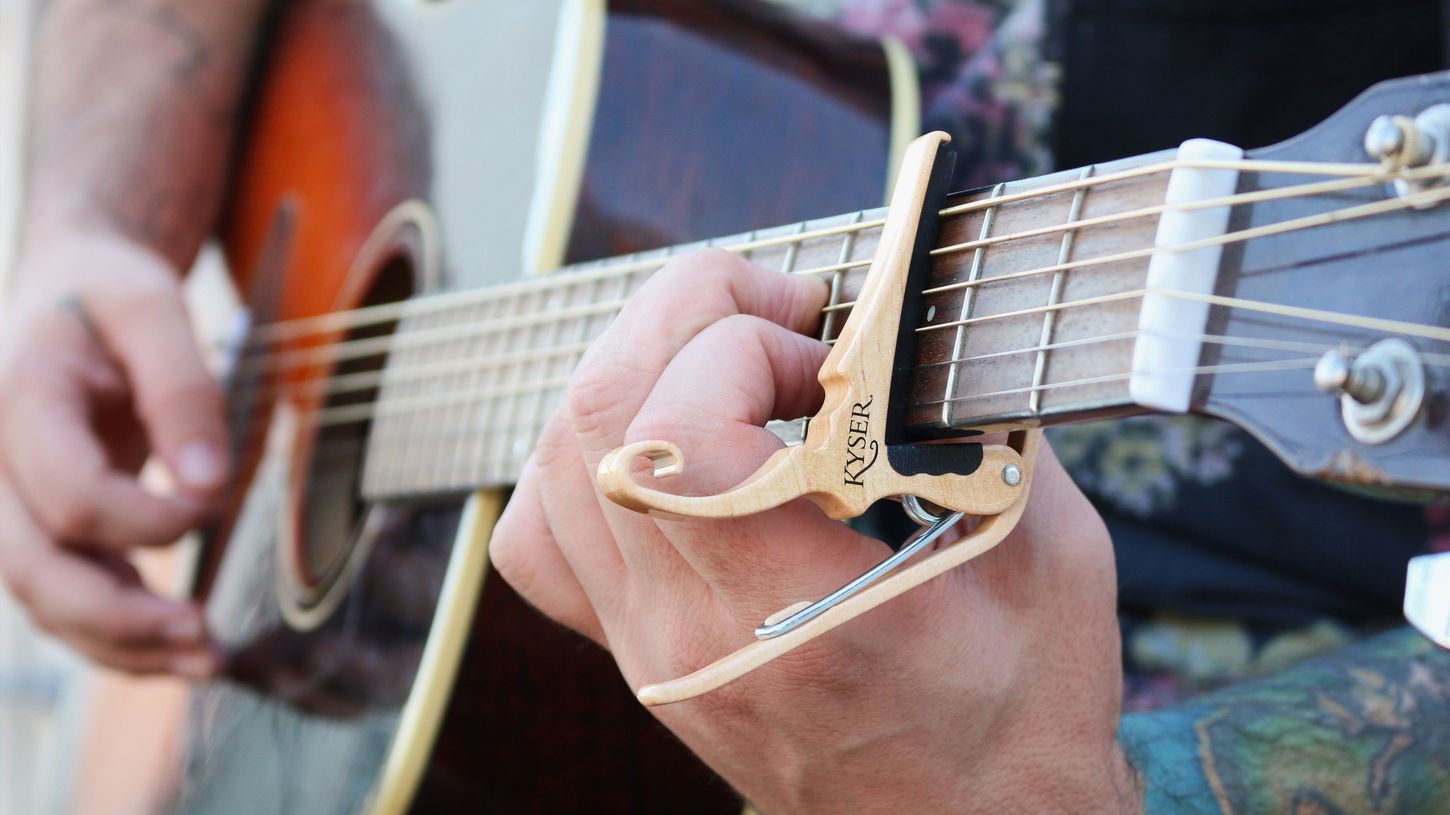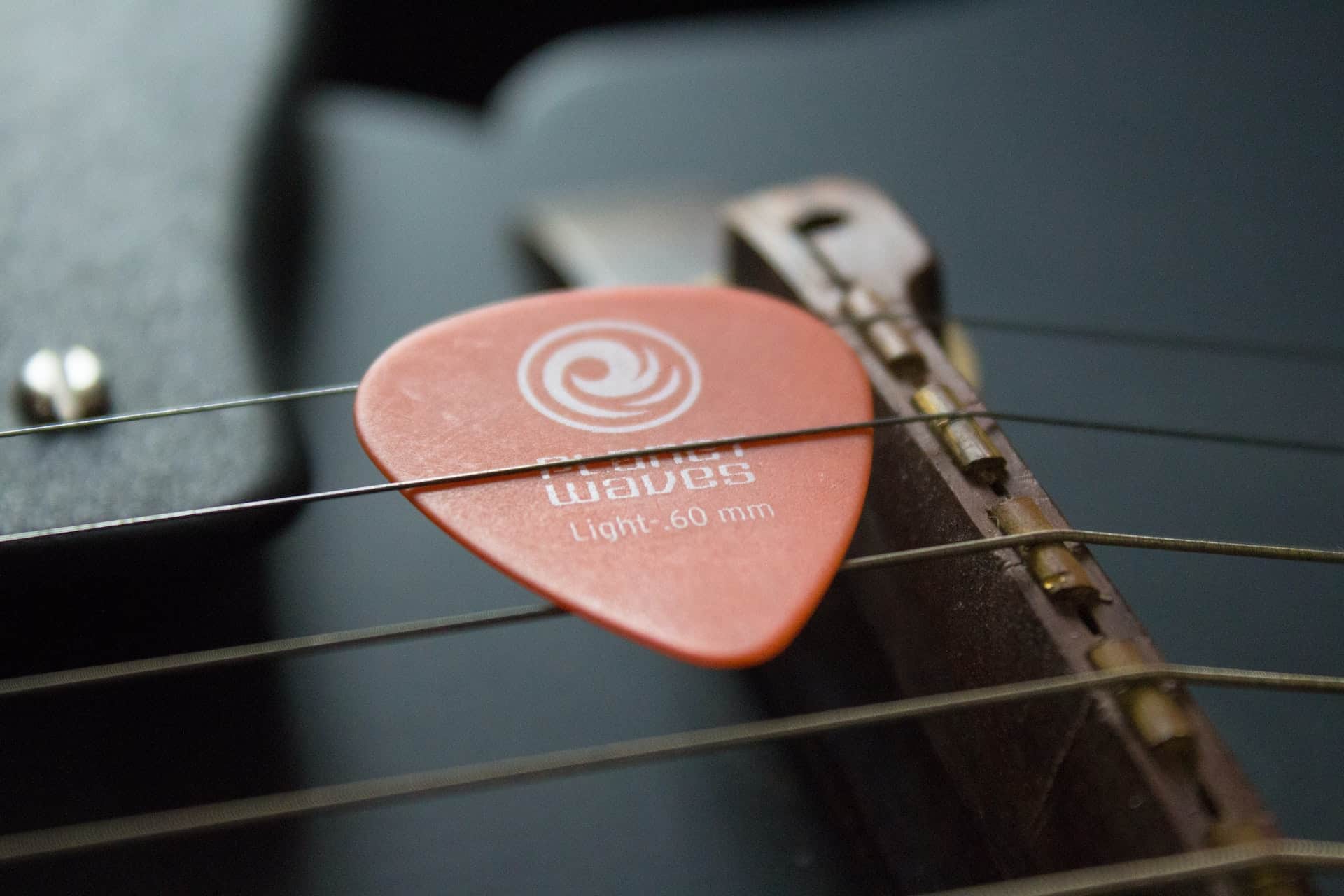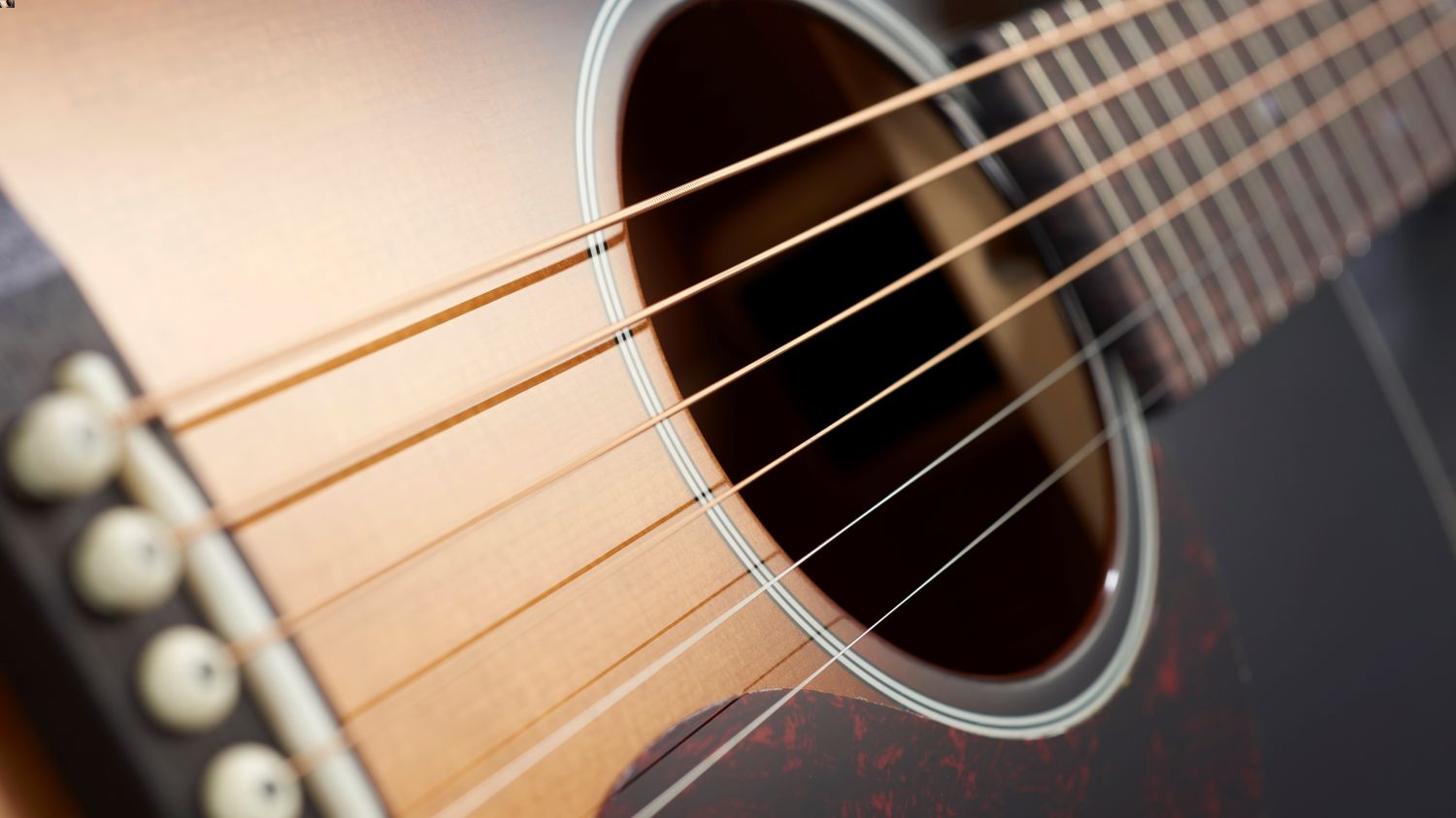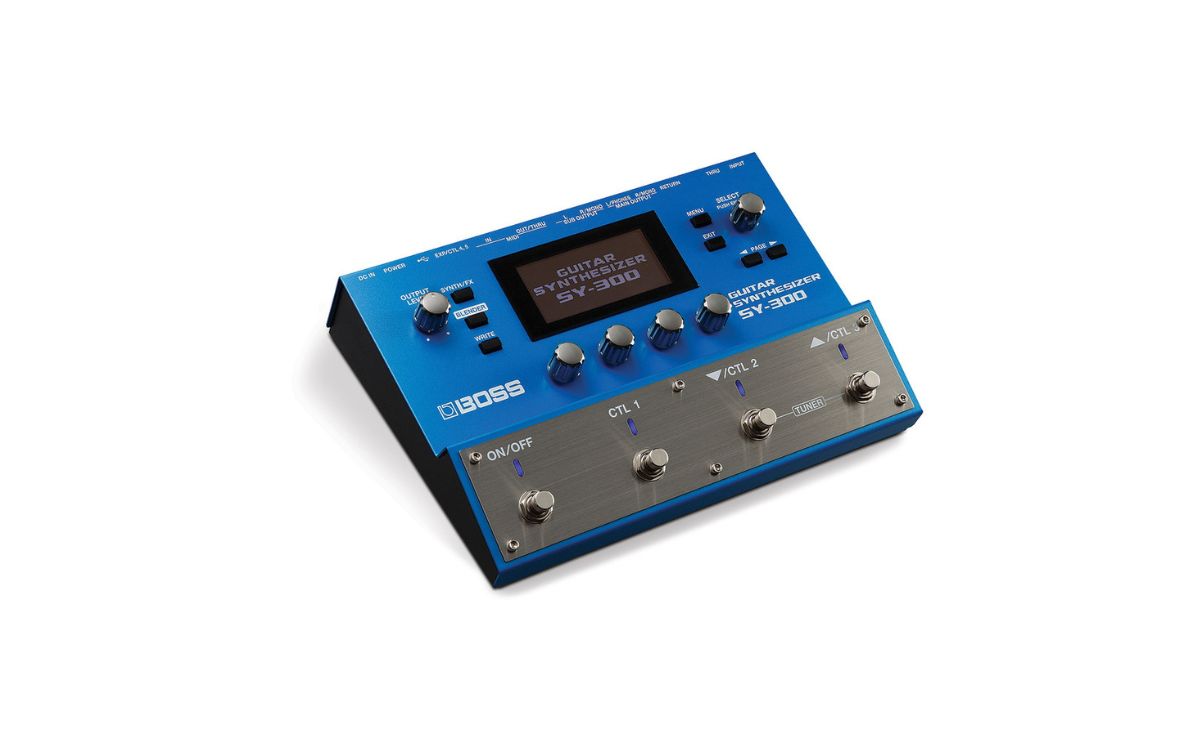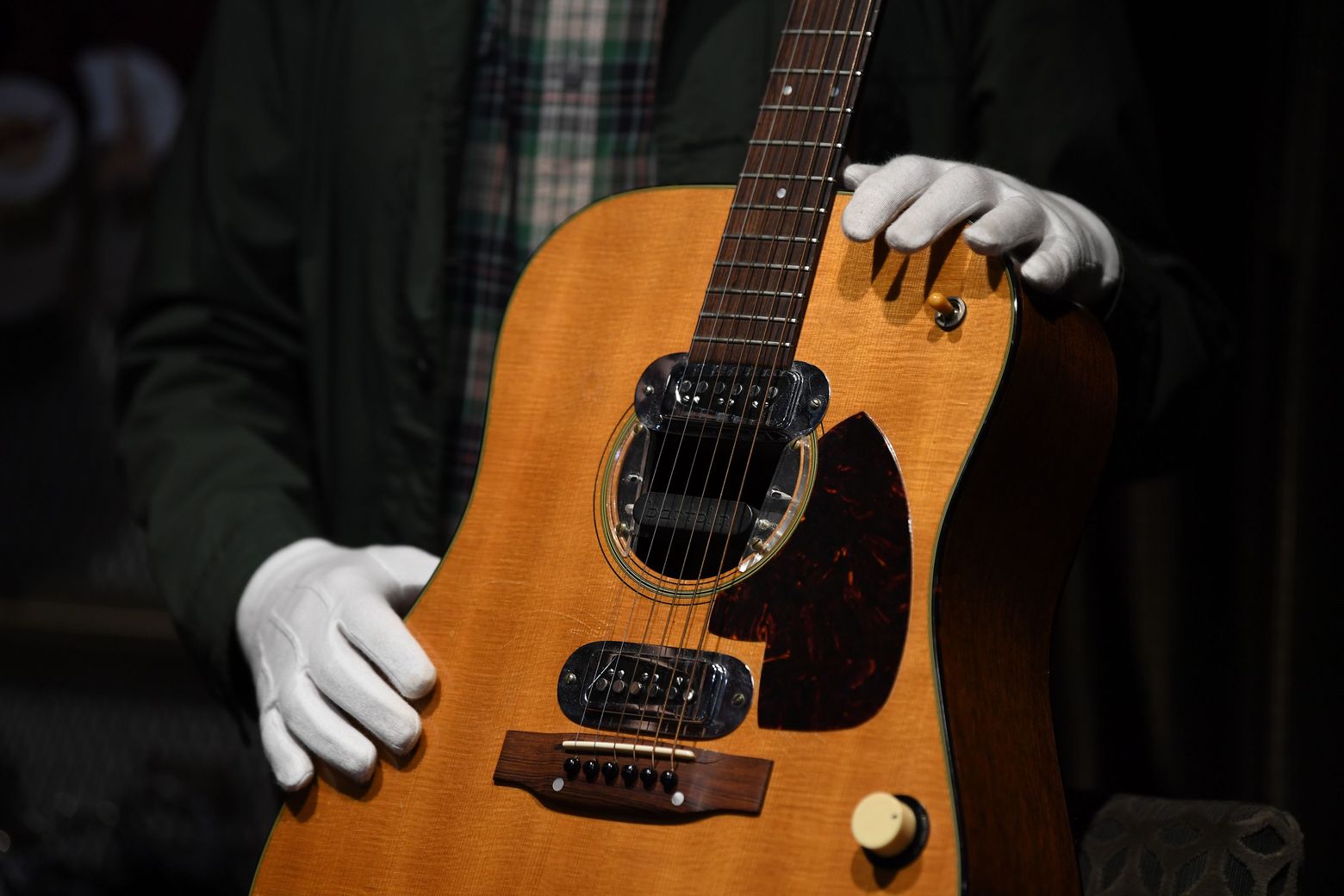Home>Instruments>Guitar>How To Use Vibrato On The Guitar


Guitar
How To Use Vibrato On The Guitar
Published: February 14, 2024
Learn how to use vibrato on the guitar to add expression and emotion to your playing. Master the technique and improve your guitar skills today!
(Many of the links in this article redirect to a specific reviewed product. Your purchase of these products through affiliate links helps to generate commission for AudioLover.com, at no extra cost. Learn more)
Table of Contents
Introduction
Introduction
Mastering the art of playing the guitar involves more than just learning chords and scales. It also requires the ability to infuse emotion and expression into your playing. One technique that can add depth and feeling to your guitar playing is vibrato. Vibrato is a subtle yet powerful technique used to add color, emotion, and character to individual notes, allowing them to sing and soar with expressiveness.
Whether you’re playing blues, rock, jazz, or classical music, understanding and mastering vibrato can elevate your playing to new heights. In this comprehensive guide, we’ll delve into the intricacies of vibrato, explore various techniques for applying it to the guitar, and provide valuable practice tips to help you hone this essential skill.
By the end of this article, you’ll have a solid understanding of how to use vibrato to infuse your guitar playing with emotion and expression, adding a new dimension to your musical repertoire.
Understanding Vibrato
Understanding Vibrato
Before delving into the techniques and applications of vibrato on the guitar, it’s essential to grasp the fundamental concept of this expressive technique. Vibrato is a musical effect characterized by a regular, pulsating variation in pitch. On the guitar, vibrato is achieved by oscillating the pitch of a note up and down in a controlled manner, creating a subtle wavering sound that adds warmth and emotion to the music.
When executed skillfully, vibrato can evoke a sense of passion and intensity, allowing the guitarist to imbue each note with a vocal-like quality. It is a technique that is prevalent across various genres, from the soulful blues solos of B.B. King to the intricate classical compositions of Andres Segovia.
There are two primary types of vibrato commonly used on the guitar: wrist vibrato and finger vibrato. Wrist vibrato involves a slight rotation of the wrist to modulate the pitch, while finger vibrato entails the subtle bending of the string using the fingers. Both techniques aim to achieve a smooth and controlled fluctuation in pitch, enhancing the expressiveness of the notes being played.
It’s important to note that vibrato is not merely about altering the pitch of a note; it also involves the manipulation of tone and dynamics. A well-executed vibrato not only varies the pitch but also introduces subtle changes in the intensity and timbre of the sound, contributing to a more nuanced and emotive performance.
Understanding the intricacies of vibrato sets the stage for mastering this essential technique on the guitar. With a solid foundation in the concept and purpose of vibrato, you’ll be better equipped to explore the various methods of incorporating this expressive tool into your playing.
Techniques for Vibrato on the Guitar
Techniques for Vibrato on the Guitar
Mastering vibrato on the guitar involves developing a keen understanding of the various techniques that can be employed to achieve this expressive effect. Whether you’re a beginner or an experienced guitarist looking to refine your vibrato skills, exploring different vibrato techniques can significantly enhance your musical prowess.
One of the most common vibrato techniques on the guitar is the wrist vibrato. To execute a wrist vibrato, start by fretting a note on the fretboard. With your fretting hand positioned behind the neck, gently rotate your wrist back and forth while maintaining firm contact with the fretted note. The movement should be smooth and controlled, allowing the pitch of the note to oscillate around its original position. It’s important to practice wrist vibrato with precision, ensuring that the pitch modulation is consistent and even.
Another widely used vibrato technique is finger vibrato, which involves imparting subtle pitch variations by bending the string with your fretting hand fingers. To perform finger vibrato, begin by fretting a note on the fretboard. With your fingers positioned on the string, apply controlled pressure to the string, causing it to bend slightly and alter the pitch of the note. The key to effective finger vibrato lies in maintaining a balanced and rhythmic motion, allowing the note to resonate with expressive fluctuations in pitch.
Furthermore, achieving a seamless and fluid vibrato requires a delicate balance of finger strength, wrist flexibility, and precise control over the string tension. Experimenting with the speed, width, and depth of vibrato can yield diverse tonal qualities, allowing you to tailor your vibrato technique to suit different musical contexts and genres.
It’s worth noting that vibrato techniques can vary based on the style of music being played. For instance, blues and rock guitarists often employ a wider and more pronounced vibrato to convey raw emotion and intensity, while classical and jazz guitarists may opt for a subtler and more controlled vibrato to accentuate melodic phrasing and expressiveness.
By honing these fundamental vibrato techniques and understanding their nuances, you’ll be well-equipped to infuse your guitar playing with emotive vibrato, adding depth and character to your musical performances.
Practice Tips for Vibrato
Practice Tips for Vibrato
Effective practice is the cornerstone of mastering vibrato on the guitar. By incorporating targeted exercises and mindful repetition into your practice routine, you can develop the dexterity and control necessary to execute vibrato with finesse and emotion.
Begin by focusing on finger strength and flexibility. Engage in regular finger exercises, such as trills and hammer-ons, to enhance the strength and agility of your fretting hand. Building finger strength is crucial for executing smooth and controlled vibrato, as it enables you to exert the necessary pressure and finesse when bending the strings to modulate pitch.
Next, dedicate focused practice sessions to honing your vibrato technique. Start by selecting a single note on the fretboard and practice applying wrist and finger vibrato to sustain the note with expressive fluctuations in pitch. Pay close attention to the evenness and consistency of the vibrato, aiming for a smooth and seamless oscillation in pitch. Gradually increase the duration and intensity of your vibrato, challenging yourself to maintain control and precision throughout the exercise.
Recording your practice sessions can provide valuable insights into your vibrato technique. Listen attentively to the recordings, evaluating the clarity, depth, and emotive quality of your vibrato. Identify areas for improvement and strive to refine your technique based on the feedback from your recordings.
Furthermore, practicing vibrato within musical contexts is essential for integrating this technique into your repertoire. Select melodic passages or solos from your favorite songs and focus on incorporating vibrato to infuse the notes with expression and feeling. Experiment with varying vibrato techniques to discern which approach best complements the musical phrasing and emotional content of the piece.
Lastly, seek feedback and guidance from experienced guitarists or instructors. Sharing your progress and receiving constructive critique can offer valuable perspectives on refining your vibrato technique. Embrace the opportunity to learn from seasoned musicians and leverage their insights to elevate your vibrato proficiency.
By integrating these targeted practice tips into your daily routine, you’ll cultivate the technical prowess and emotive depth required to wield vibrato as a compelling tool for musical expression on the guitar.
Applying Vibrato in Different Musical Styles
Applying Vibrato in Different Musical Styles
Vibrato is a versatile and expressive technique that finds its place across a wide spectrum of musical styles, each demanding a nuanced approach to harnessing its emotive potential on the guitar.
In blues and rock music, vibrato serves as a cornerstone of emotive expression, allowing guitarists to inject raw passion and intensity into their playing. The blues, in particular, is renowned for its emotive vibrato, characterized by wide, soulful fluctuations in pitch that convey deep emotion and longing. Rock guitarists often employ vibrato to add a vocal-like quality to their solos, infusing each note with a sense of urgency and fervor.
Conversely, in jazz music, vibrato takes on a more refined and subtle role, contributing to the sophisticated and lyrical nature of jazz guitar playing. Jazz guitarists utilize vibrato to impart elegance and nuance to melodic lines, employing controlled and nuanced vibrato to accentuate phrasing and convey emotive subtlety.
Classical guitar repertoire also embraces vibrato, albeit in a more restrained and deliberate manner. In classical music, vibrato is utilized sparingly to enhance the expressiveness of melodic passages and to imbue sustained notes with warmth and depth. The controlled application of vibrato in classical guitar playing serves to elevate the emotional resonance of the music, adding a layer of richness and sensitivity to the performance.
Furthermore, vibrato is integral to the expressive articulation of slide guitar playing, where the technique is employed to evoke a vocal-like quality and infuse slide passages with a soulful, wailing character. Slide guitarists adeptly utilize vibrato to impart a distinctively emotive and evocative quality to their playing, contributing to the resonant and expressive nature of slide guitar performances.
Across diverse musical styles, from country and folk to metal and beyond, vibrato remains a potent tool for imbuing guitar playing with emotion, character, and individuality. As a guitarist, adapting your vibrato technique to suit the stylistic demands of different genres empowers you to convey a rich spectrum of emotions and musical expressions through your instrument.
Conclusion
Conclusion
In the realm of guitar playing, vibrato stands as a cornerstone of expressive technique, capable of imbuing music with emotion, depth, and individuality. Whether you’re navigating the soulful terrain of blues, unleashing fiery rock solos, or delving into the intricate melodies of jazz and classical music, mastering vibrato empowers you to infuse your playing with a compelling vocal-like quality.
By understanding the nuances of vibrato and honing diverse vibrato techniques, you unlock a world of expressive possibilities on the guitar. From the controlled elegance of finger vibrato to the impassioned fervor of wrist vibrato, each approach adds a distinct hue to your musical palette, enriching your performances with emotive resonance.
Effective practice lies at the heart of mastering vibrato, requiring dedication, mindfulness, and a commitment to refining your technique. Through targeted exercises, focused repetition, and attentive self-assessment, you can cultivate the dexterity and control necessary to wield vibrato as a powerful tool for musical expression.
Moreover, embracing vibrato within different musical styles broadens your artistic horizons, allowing you to adapt this versatile technique to suit the emotive demands of diverse genres. From the raw, impassioned vibrato of blues and rock to the nuanced elegance of jazz and classical music, each style offers a unique canvas for infusing vibrato with individual character and emotive depth.
As you embark on your journey to master vibrato on the guitar, remember that this expressive technique is not merely a skill to be learned, but a conduit for channeling your emotions and musical identity. With each note, vibrato becomes a vehicle for conveying your innermost feelings, allowing you to speak through your instrument with a voice that resonates with passion and authenticity.
In the end, the art of vibrato transcends technical proficiency, evolving into a profound means of connecting with your audience and expressing the depths of human emotion through the strings of your guitar. As you continue to refine your vibrato technique and explore its boundless potential, may your musical journey be imbued with the soul-stirring vibrancy that vibrato bestows upon those who seek to speak through their music.

